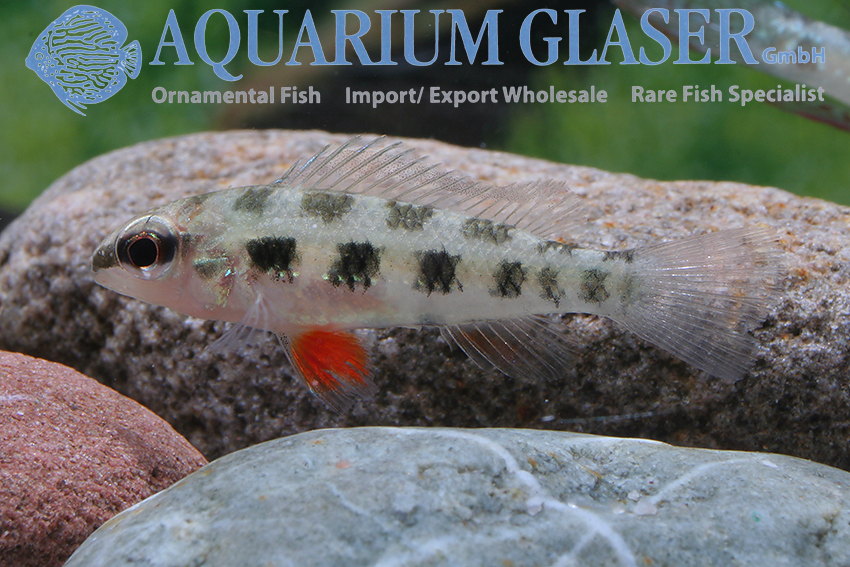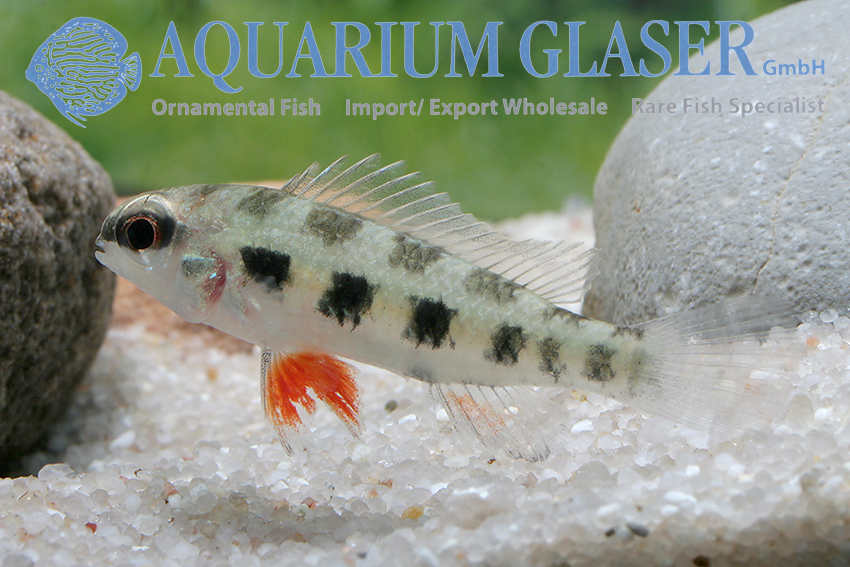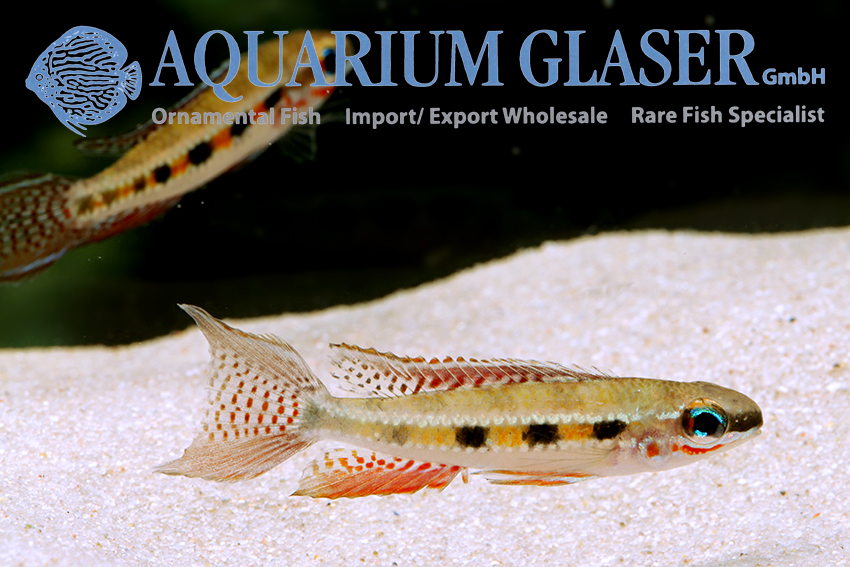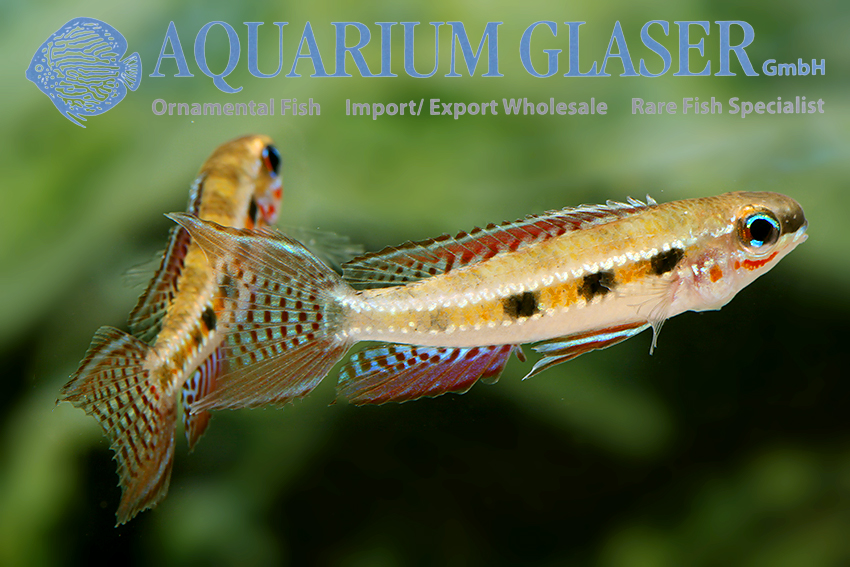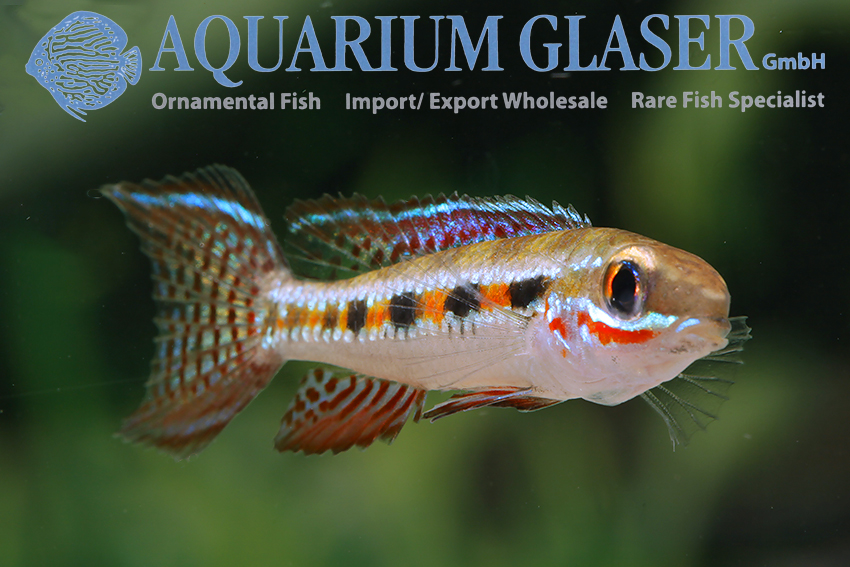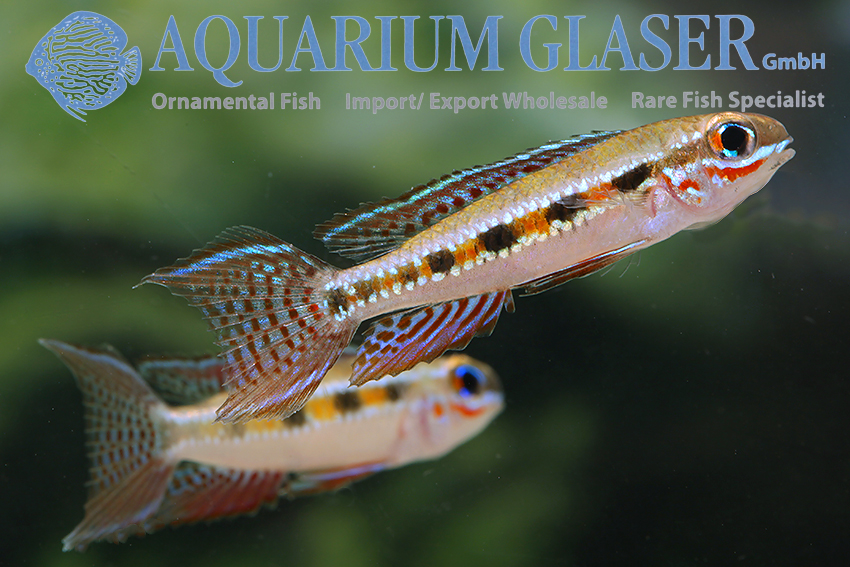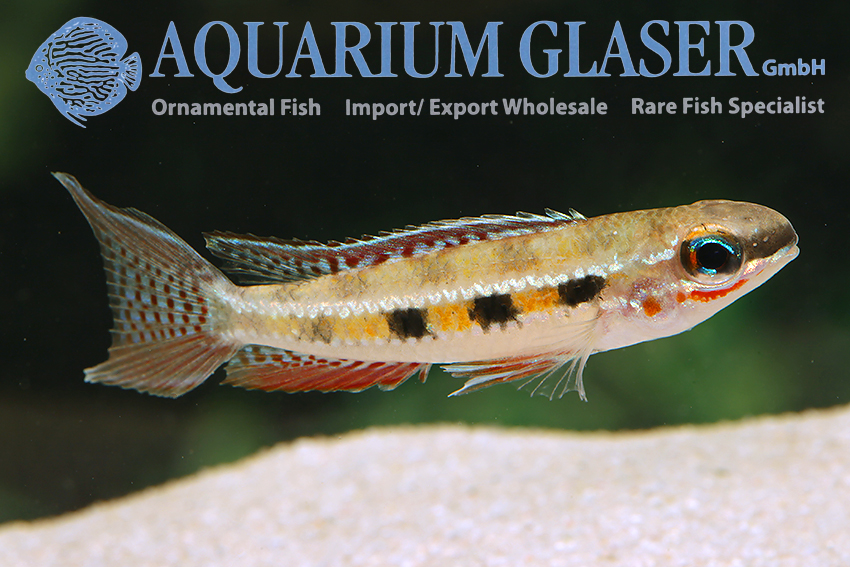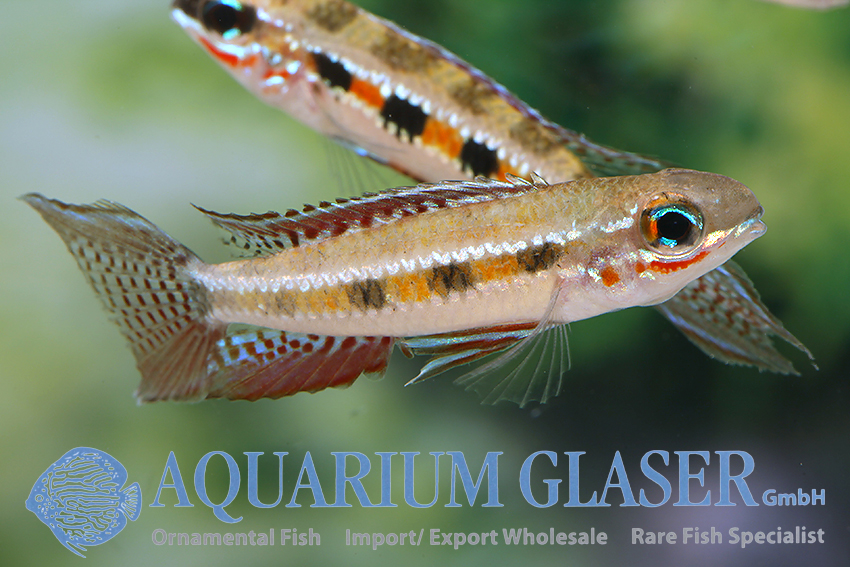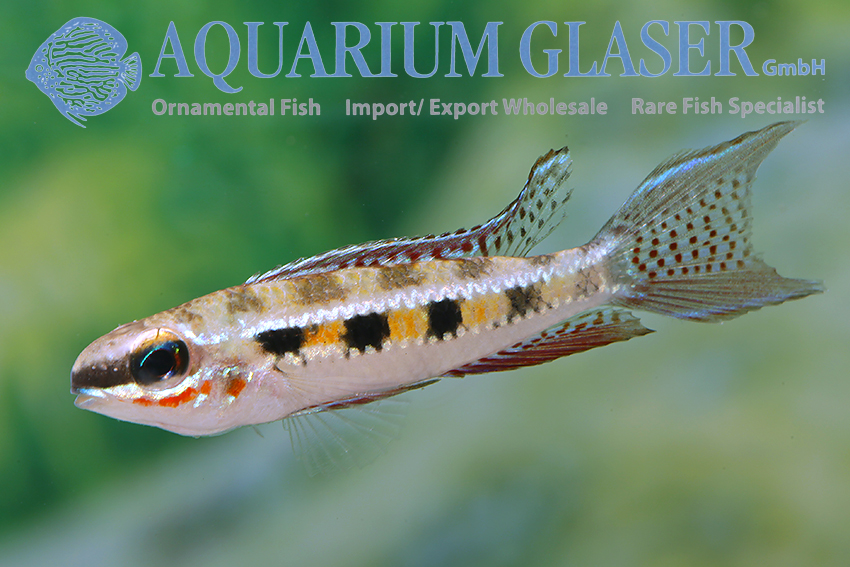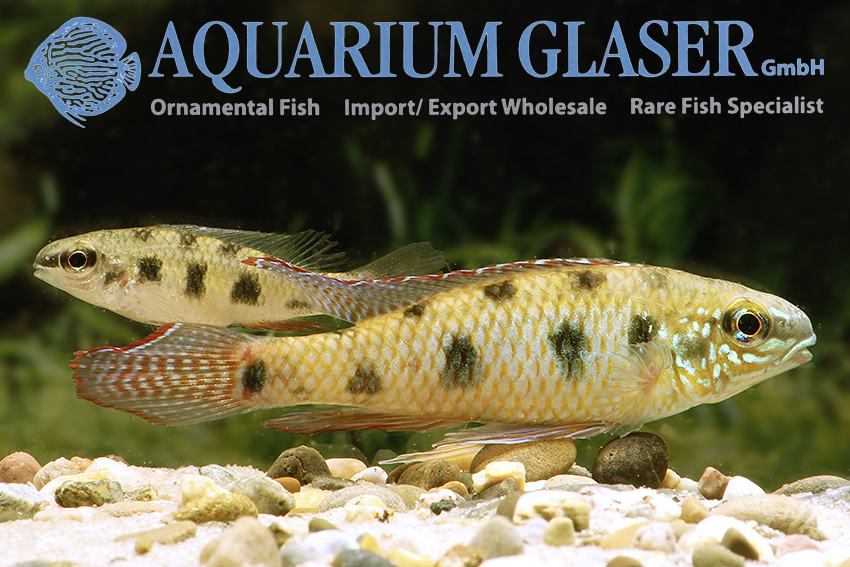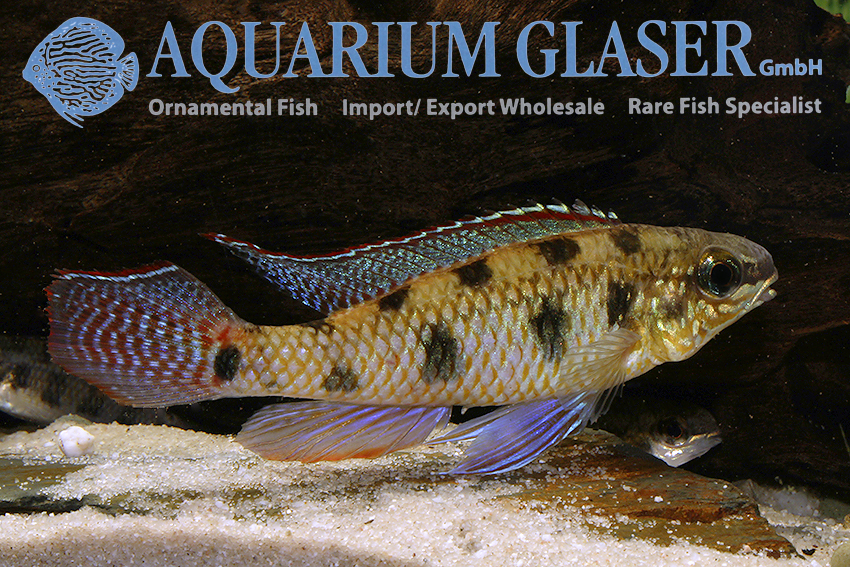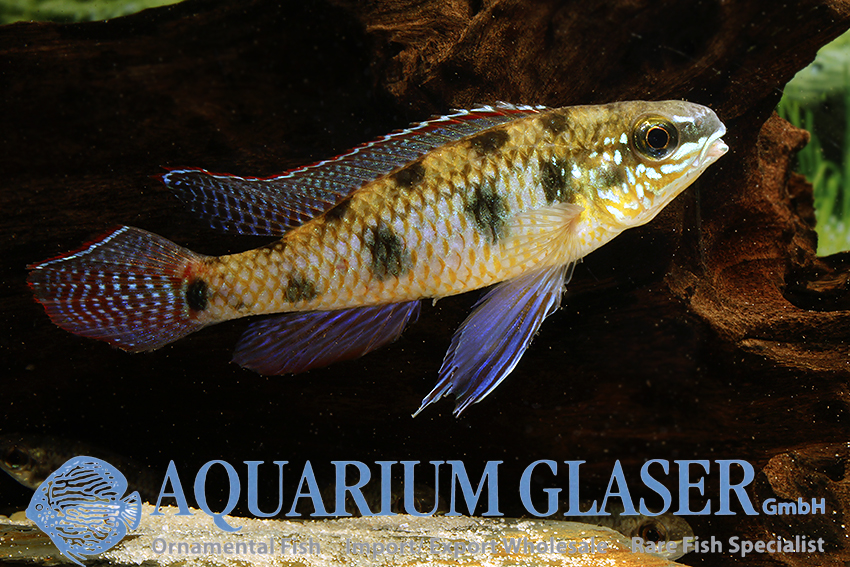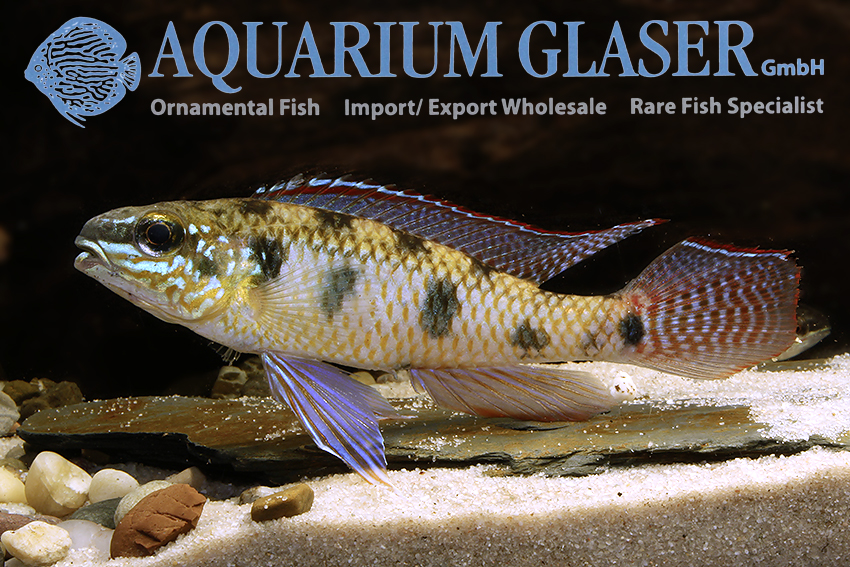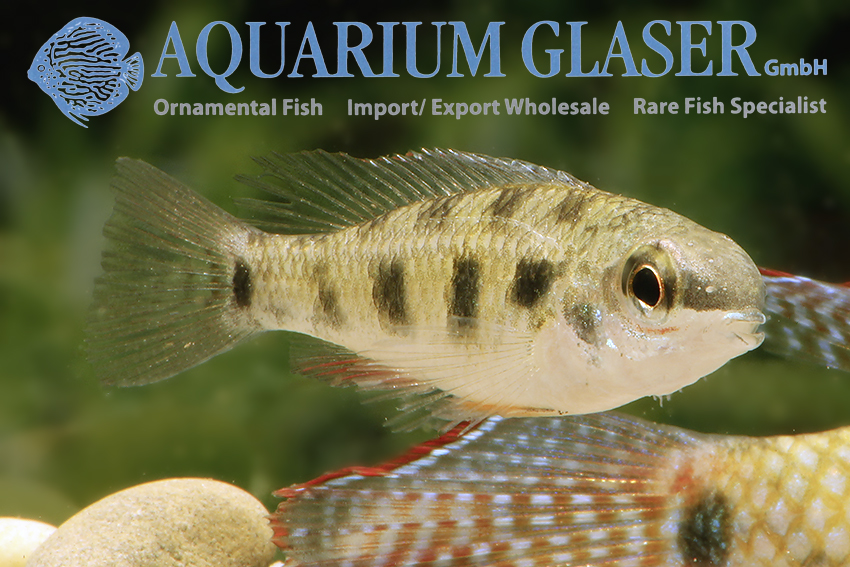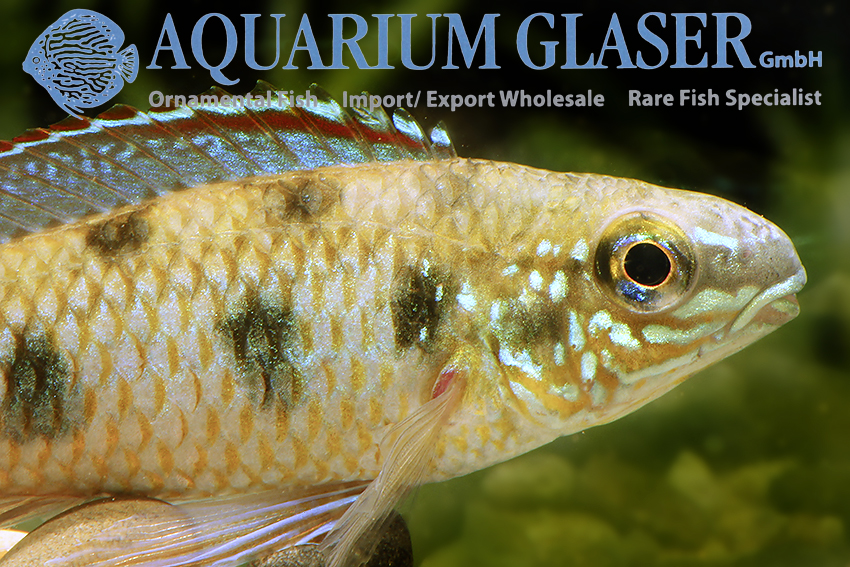The checkerboard cichlid (Dicrossus filamentosus) is the most typical dwarf cichlid in the habitat of the cardinal tetra (Paracheirodon axelrodi). It is found in Brazil (Rio Negro drainage) as well as in Colombia and Venezuela (Orinoco drainage). Males have a lyre-shaped caudal fin and grow to almost 8 cm long; the caudal fin of females is rounded. Females always remain smaller than males. In the wild, they probably spawn for the first time at about 3 cm in length.
Females of the checkerboard cichlid that have already spawned can be recognized by their blood red pelvic fins. In virgin animals the pelvic fins are colorless. This dwarf cichlid lives in harem associations, one male caring for several females. The species is an open-breeder, so spawns on the surface of solid objects, preferably plant leaves.
In feeding, Dicrossus filamentosus (formerly known as Crenicara filamentosa) is unproblematic, but reproduction is only successful in water that is very close to natural conditions: practically no hardness and pH around 5. In community tanks, however, the fry are usually eaten by Cardinal and Co. despite the good brood care by the female.
For our customers: the animals have code 668007 on our stocklist. Please note that we supply exclusively to wholesalers.
Text & photos: Frank Schäfer





